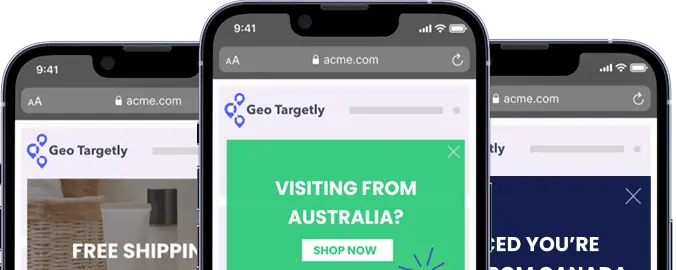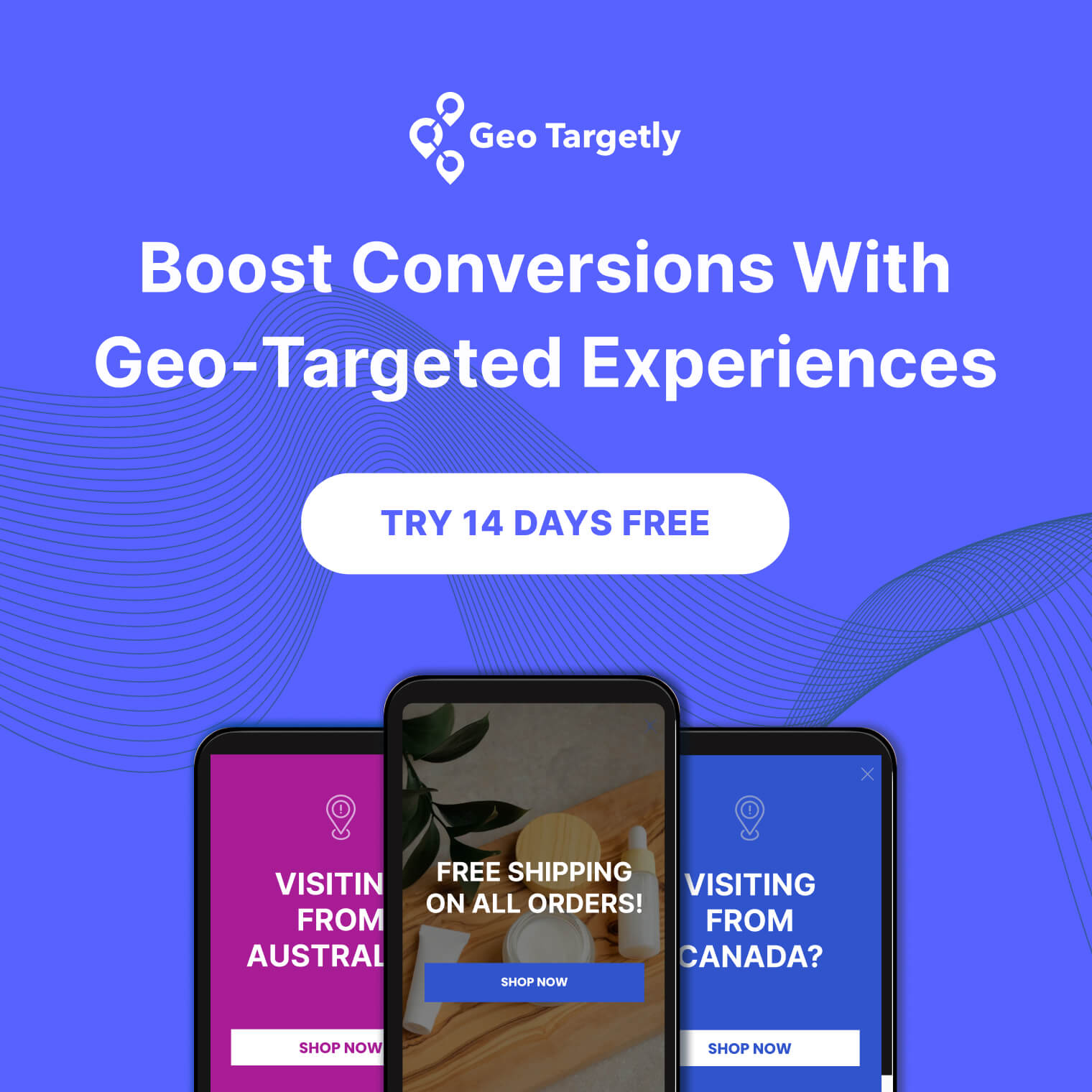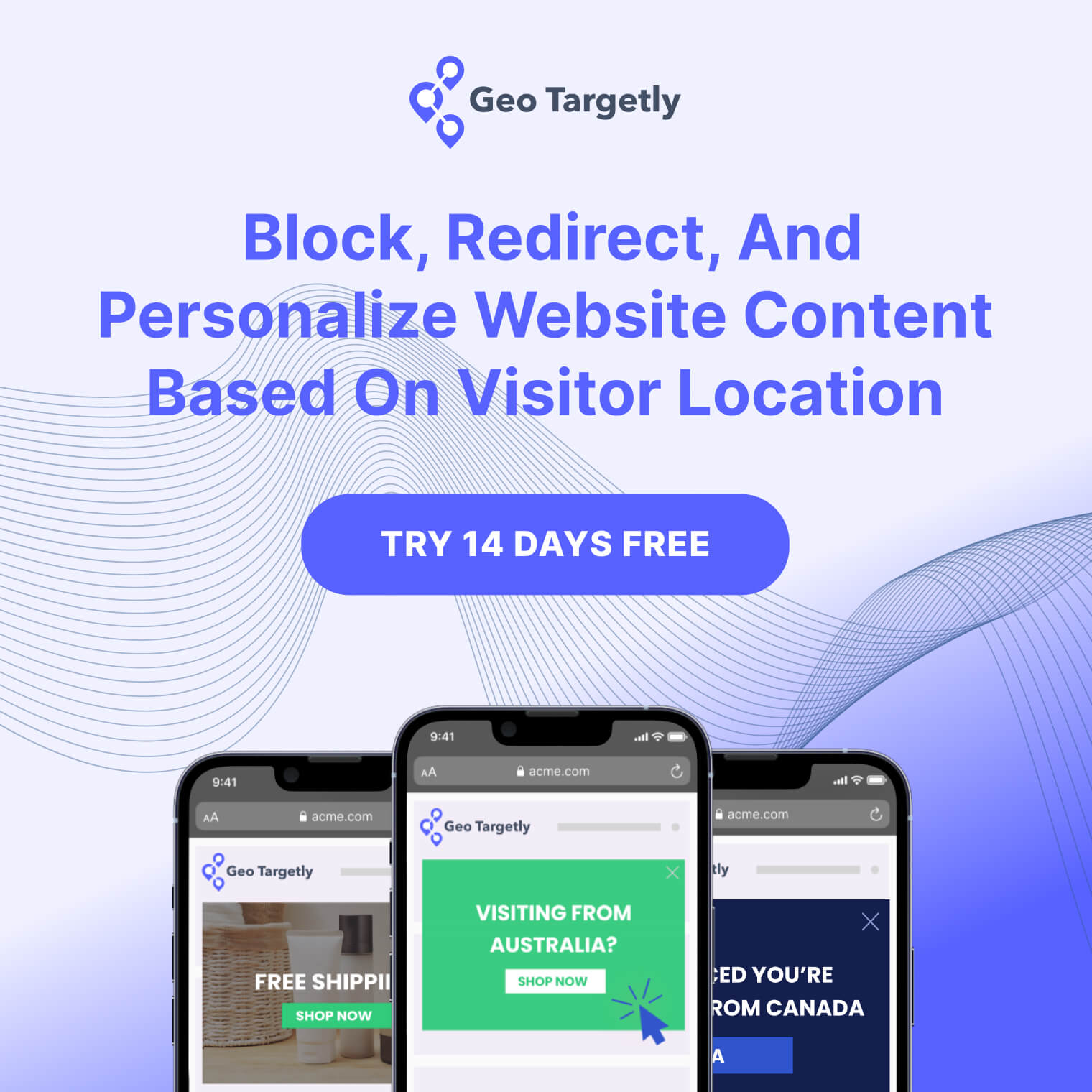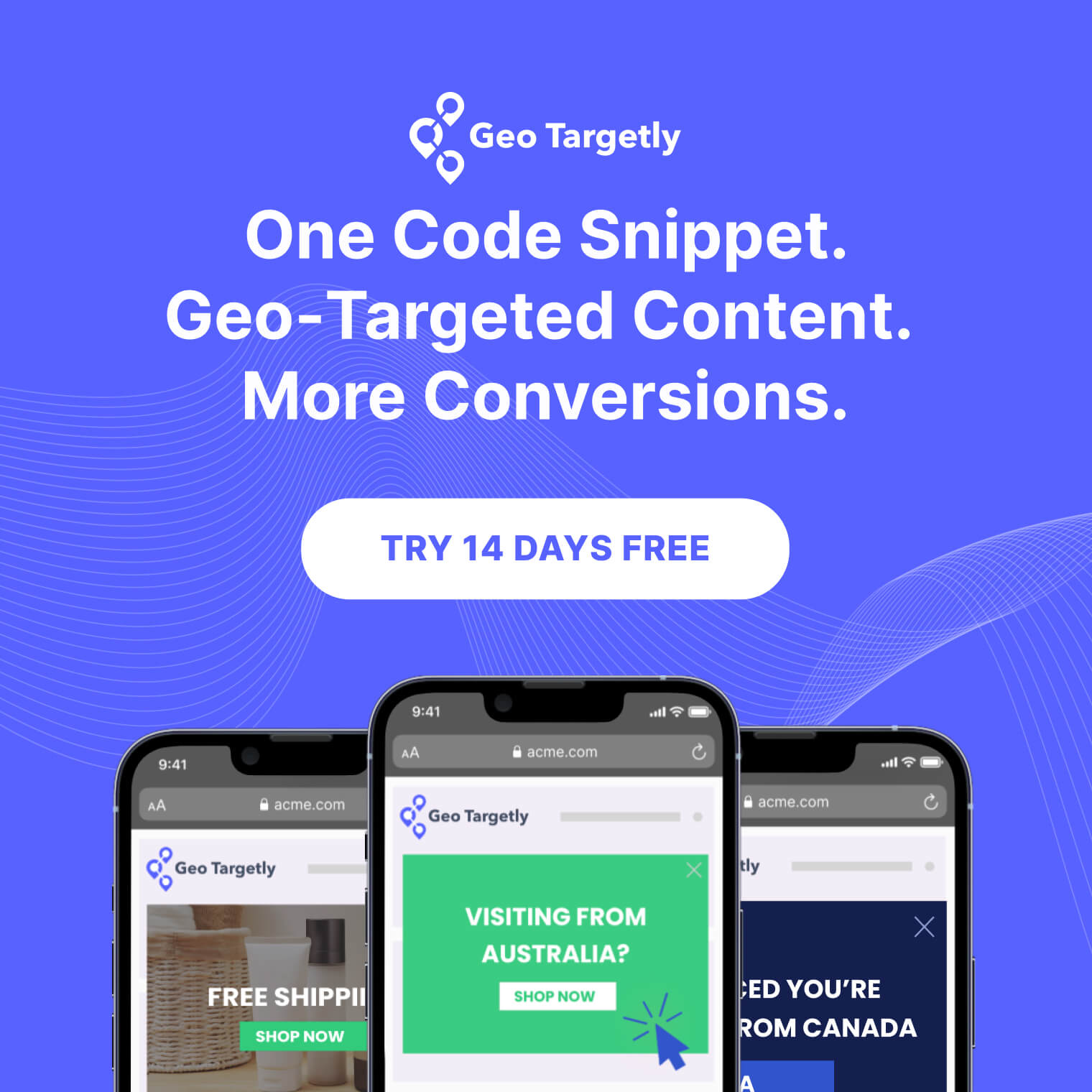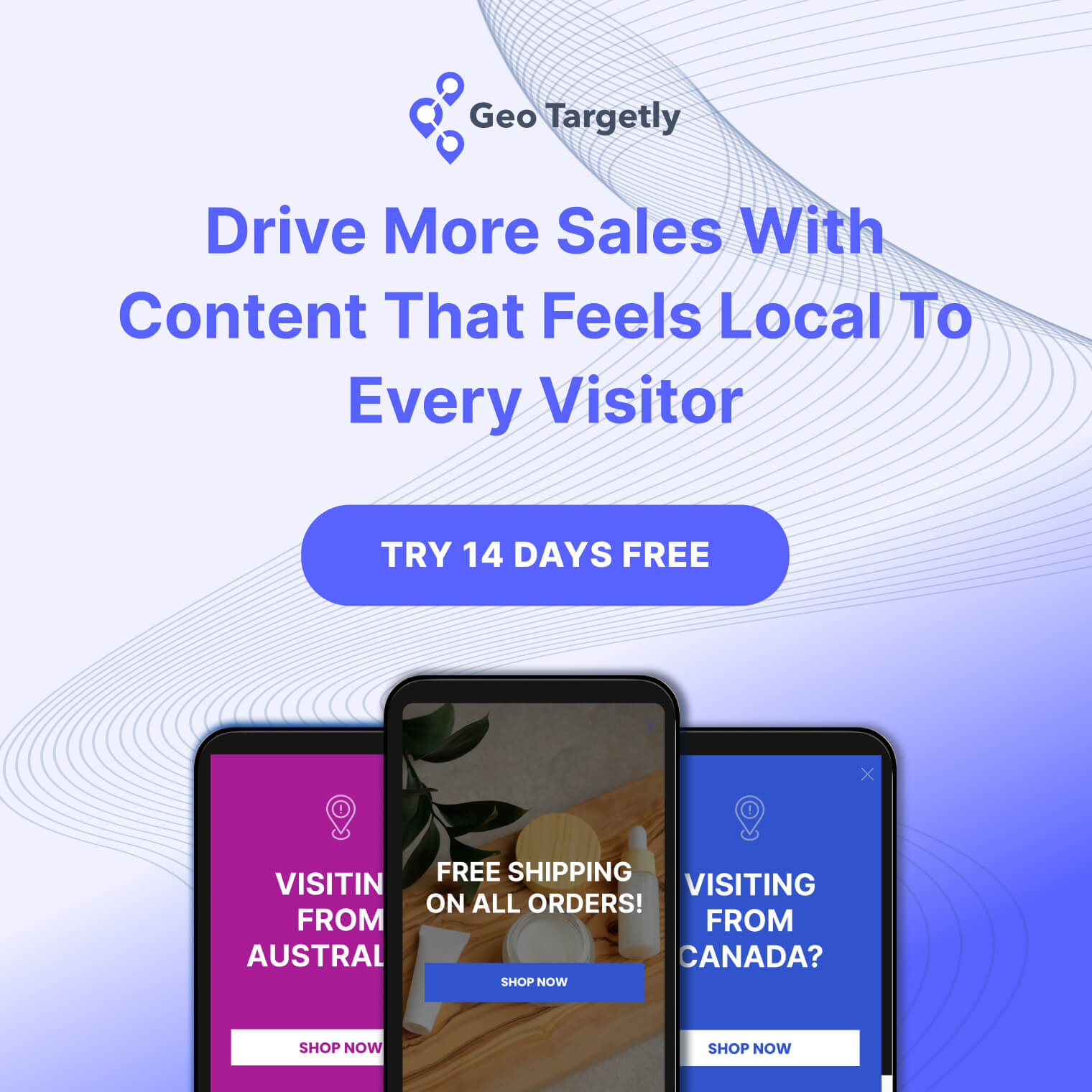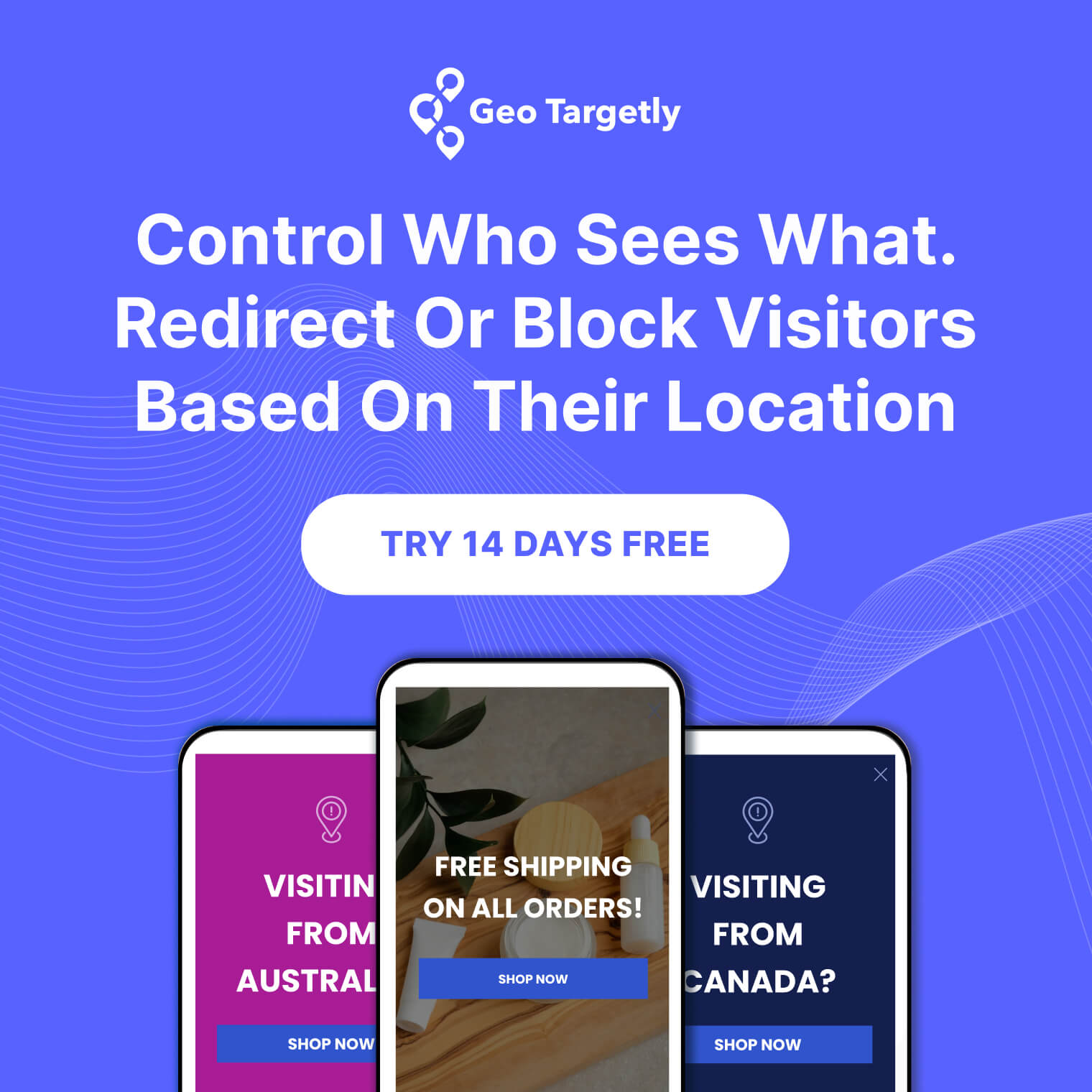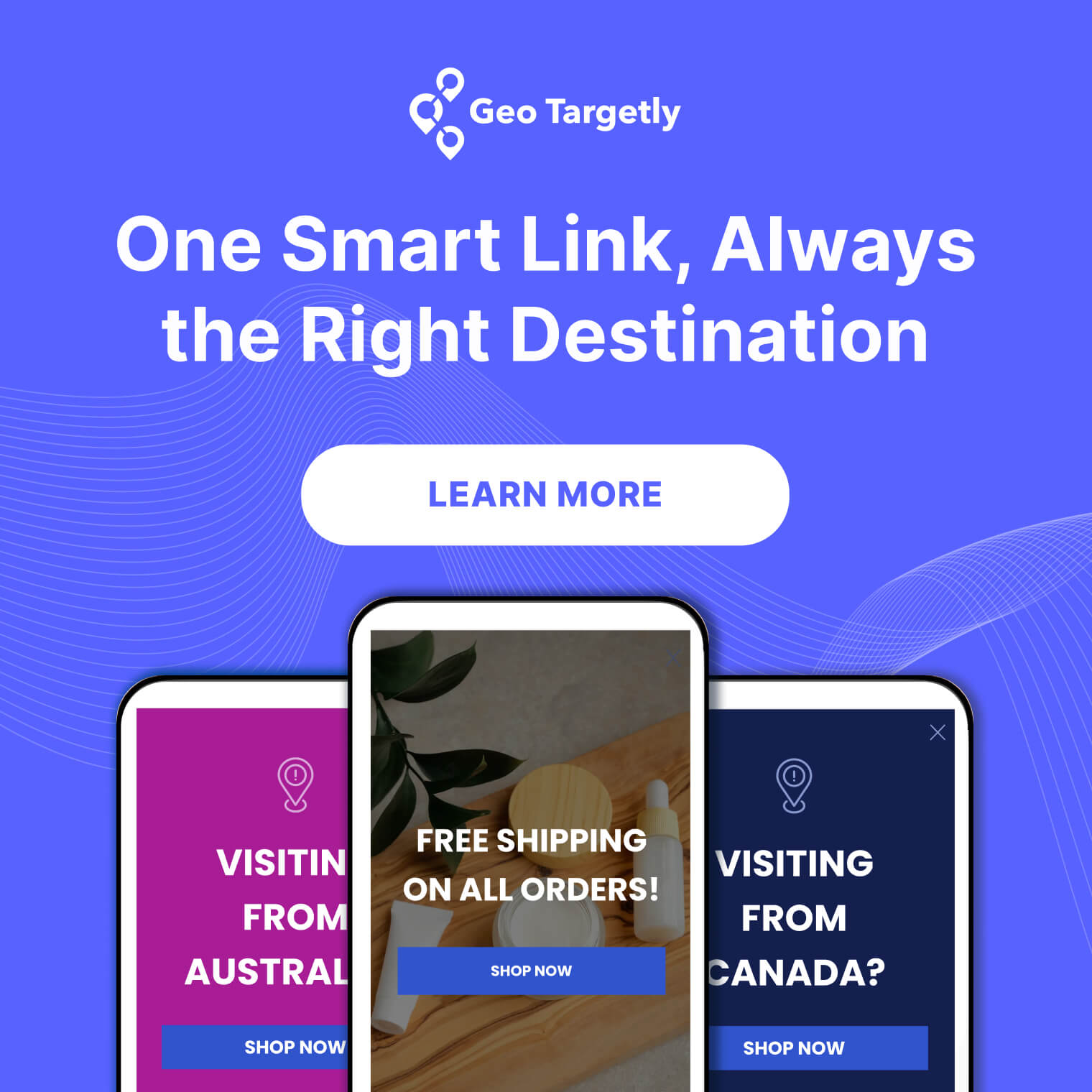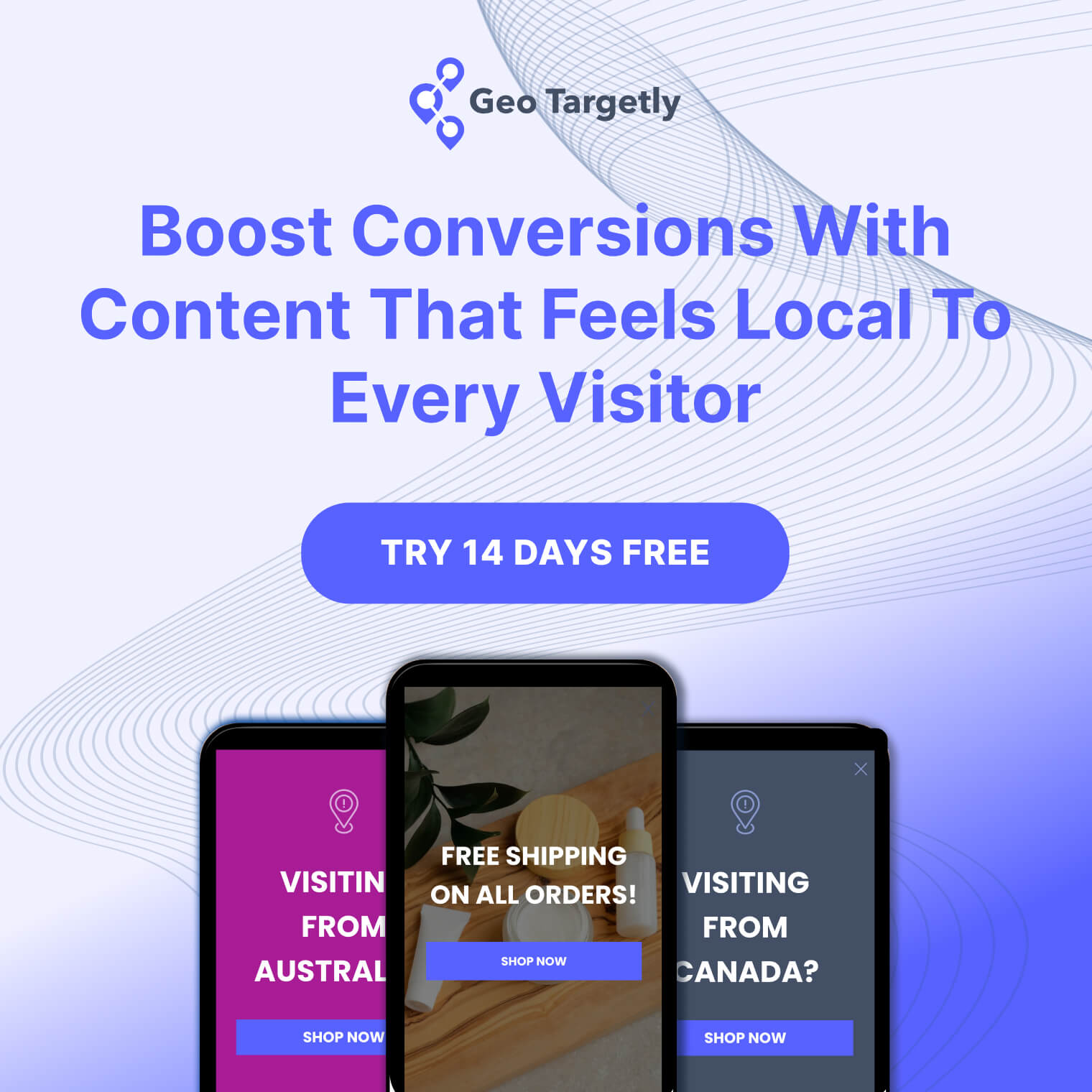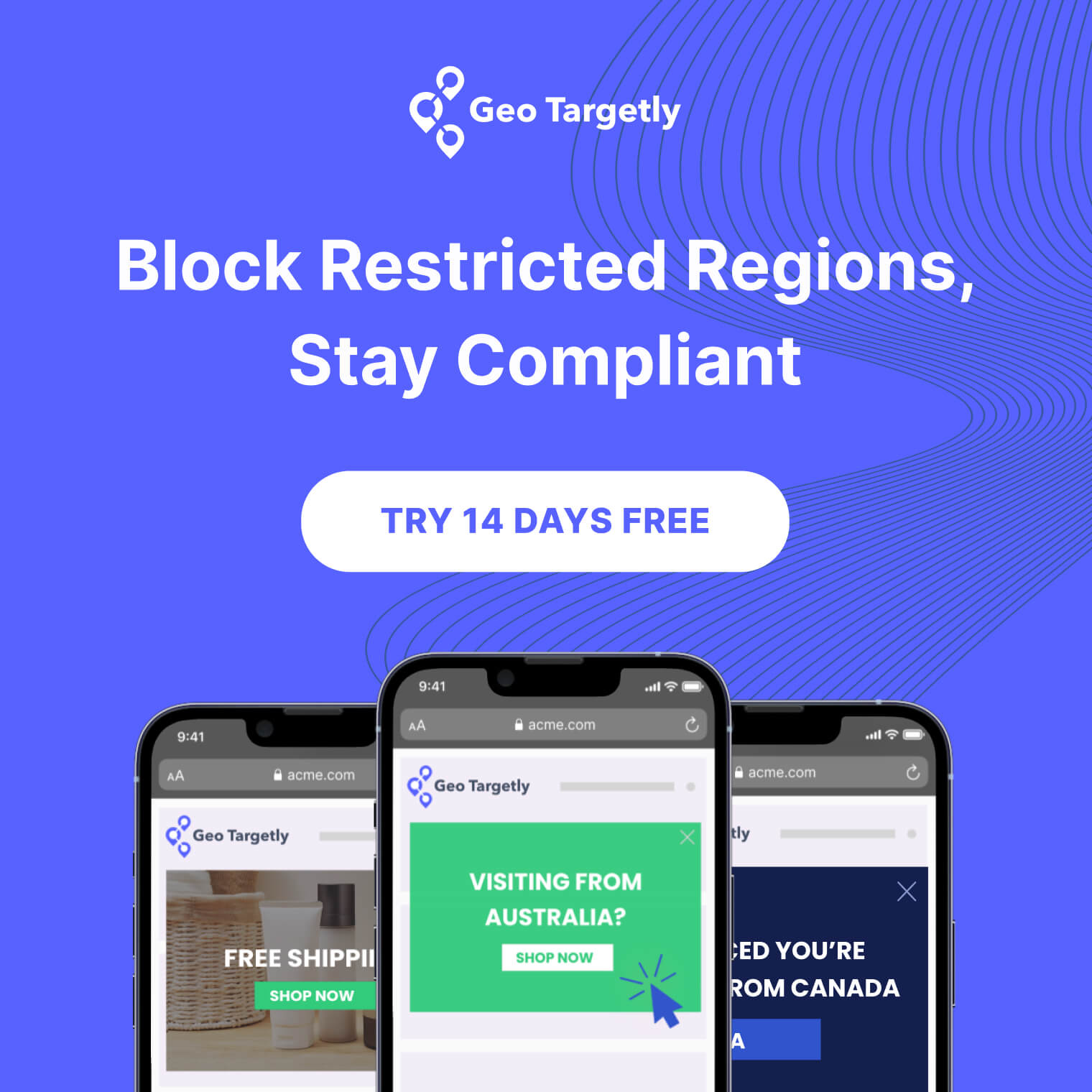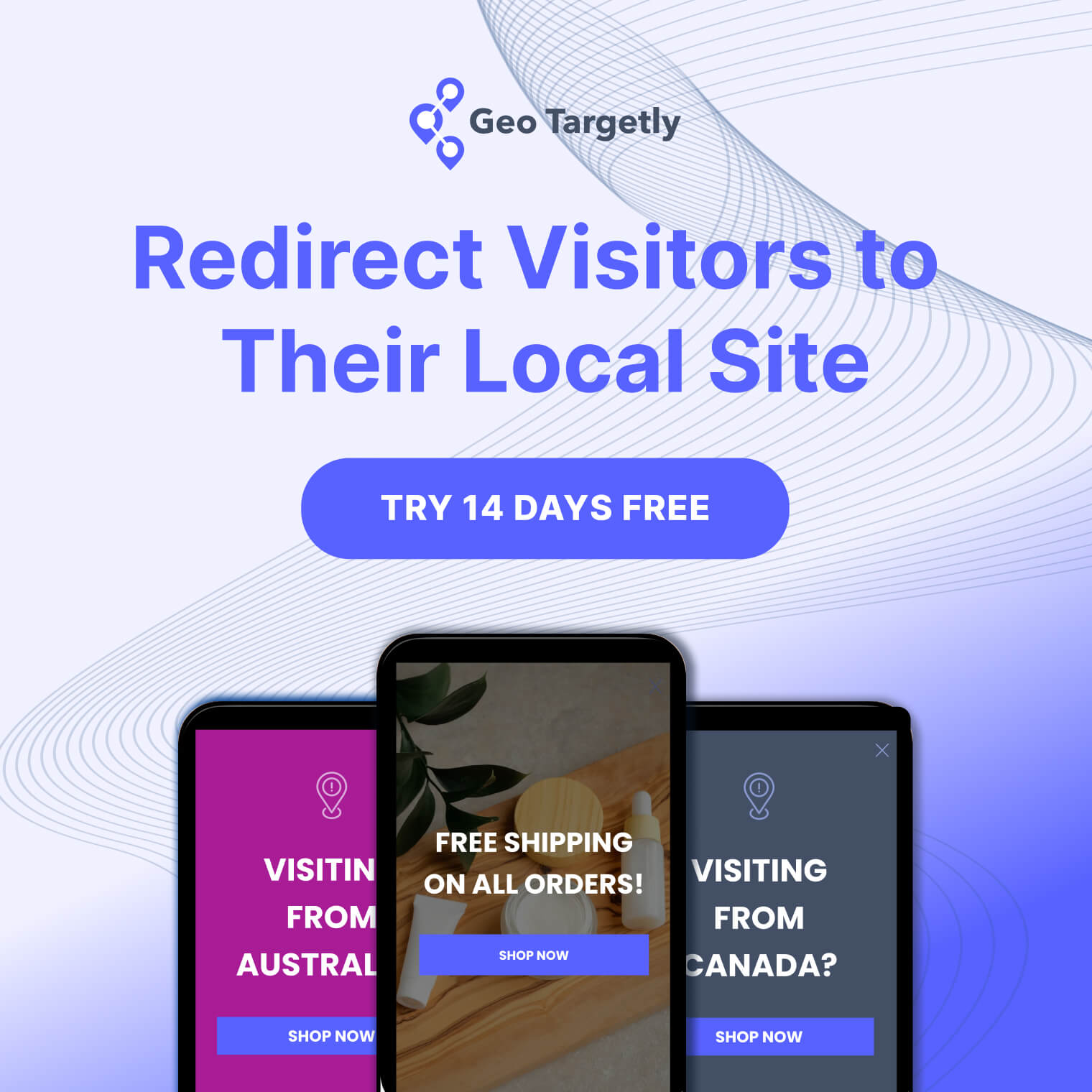

Key takeaways:
- Webflow’s complexity, cost, and lack of native geotargeting drive users to seek alternatives.
- Geo Targetly adds powerful location-based personalization to any website platform.
- Each Webflow alternative excels in specific areas such as Wix for simplicity, Squarespace for design, Shopify for e-commerce, WordPress for flexibility, and Framer for interactivity.
- Pairing Geo Targetly with other webflow alternatives enables dynamic, localized user experiences without major development.
Webflow is a no-code website builder known for its visual design flexibility and CMS capabilities. It empowers designers and marketers to build production-ready websites without writing code.
But Webflow isn't for everyone. Some might struggle with its pricing, learning curve, or limitations in advanced geo-personalization. That's why exploring Webflow alternatives is an attractive option.
Among these, Geo Targetly stands out, not as a website builder but rather as a powerful layer that adds location-based targeting, redirects, and content personalization to any website, including Webflow.
This article walks you through the top Webflow alternatives. From visual builders to add-on tools, each solution highlights how it addresses common limitations around scalability, customization, and geolocation.
Why look for a Webflow alternative?
While Webflow offers features for starting and expanding your online presence, there are still limitations that let you opt to find alternatives. Below are some common reasons behind this:
Ease of use vs. complexity
Webflow comes at a price: complexity. While experienced designers and developers often appreciate Webflow's flexibility, non-technical users, digital marketers, and small business owners can find it overwhelming. Why? Because…
- Unlike traditional drag-and-drop platforms like Wix or Squarespace, Webflow requires users to understand concepts like CSS grids, flexbox, box model behavior, and responsive breakpoints.
- It's less intuitive for those who are used to point-and-click interfaces with visual guides.
- Even simple tasks, like adjusting margins or aligning elements, may involve trial and error for beginners.
This learning curve can slow down production, especially for teams that need to move fast without relying on a developer.
Example: A digital marketer wanting to spin up a quick geotargeted landing page for a campaign may find it faster to do so with Wix or WordPress than navigating Webflow's UI and classes.
Pricing concerns
Webflow offers multiple pricing tiers, but the total cost of ownership can quickly rise, especially for sites that use the CMS or need hosting with high traffic volumes.
Here's where the pricing gets challenging:
- CMS Plans are separate from Workspace Plans, which govern the editor experience and permissions.
- If you're managing multiple sites or need collaborators, you'll likely need to upgrade to a Workspace plan, adding another monthly cost.
- Hosting is tied to Webflow's ecosystem, so you can't bring your server to reduce costs.
This setup may not be ideal for:
- Startups or small businesses with tight budgets
- Agencies managing multiple client sites (each requiring a separate CMS or Site plan)
- E-commerce brands needing advanced features (which are priced higher)
Example: An e-commerce manager running regional campaigns may need multiple landing pages on separate domains, each incurring an extra CMS + Hosting fee in Webflow.
Limitations in geotargeting
Perhaps the most significant limitation for international or regionally-targeted businesses is that Webflow does not offer native geotargeting functionality.
This means that, out of the box, Webflow cannot:
- Automatically redirect users based on location (like sending French visitors to /fr).
- Show location-specific content, such as currency, promotions, or language.
- Personalize experience based on IP address or geolocation data.
While there are workarounds like using third-party embeds, JavaScript hacks, or integrations, they're often not scalable, lack flexibility, or require developer involvement.
Example: A marketing team running global PPC ads may want localized landing pages based on country or language. Without a geotargeting solution, all users see duplicate generic content, hurting engagement and conversion rates.
This gap is where tools like Geo Targetly shine. It allows you to layer location-based redirects, dynamic content, and messaging on top of Webflow (or any other platform), giving you complete control over local personalization without switching platforms entirely.
Top Webflow alternatives for different needs
Choosing the right website platform depends on your goals. Whether you're prioritizing ease of use, e-commerce features, design flexibility, or geo-personalization, these Webflow alternatives offer tailored solutions for different business needs.
1. Geo Targetly – best for geotargeting and location personalization
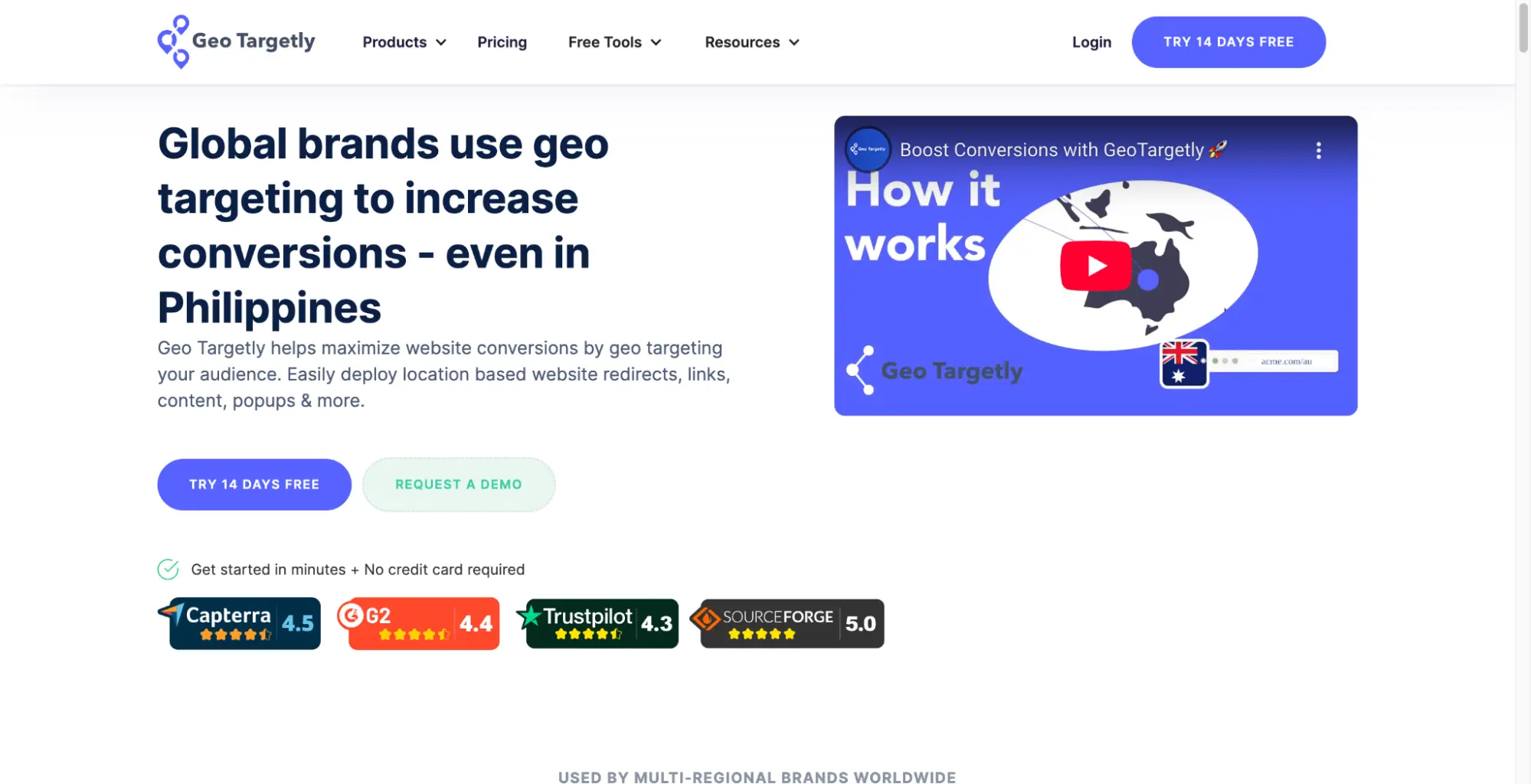
Geo Targetly is a geo-personalization and location-based targeting platform designed to enhance any website with regional customization capabilities.
However, it’s not a website builder, and while platforms like Webflow offer advanced design and CMS control, they lack built-in support for geolocation functionality.
Geo Targetly fills this gap by allowing website owners to redirect visitors, personalize content, and trigger location-based experiences – all without needing to rebuild or migrate their site.
It works with major platforms including Webflow, Shopify, WordPress, Wix, and custom-coded sites. Its flexibility makes it ideal for businesses operating across multiple regions or countries.
Key features
- Geo Redirect. Redirect users to country-, region-, or city-specific pages or domains based on their IP address. For example, visitors from the UK can be automatically directed to yourdomain.com/uk.
- Geo Content. Dynamically change text, pricing, images, and other on-page content based on visitor location, all without needing to clone pages or manage multiple versions.
- Geo Popups. Display promotional messages, legal notices, or calls to action tailored to specific geographic regions. These can be configured to trigger based on country, city, or even custom-defined radius zones.
- Platform Integrations. Easily integrates with:
- Webflow
- Shopify
- WordPress
- Additional support for Wix, BigCommerce, and custom CMS platforms
- For more details on getting started with Geo Targetly, visit our guides.
Who is Geo Targetly best for?
- E-commerce businesses managing country-specific pricing, catalogs, or shipping options.
- Global brands and SaaS companies targeting audiences by language, location, or currency.
- Agencies handling localized campaigns or multi-region client websites.
- Marketing teams running international PPC or SEO campaigns and needing regionally personalized landing pages.
Pricing overview
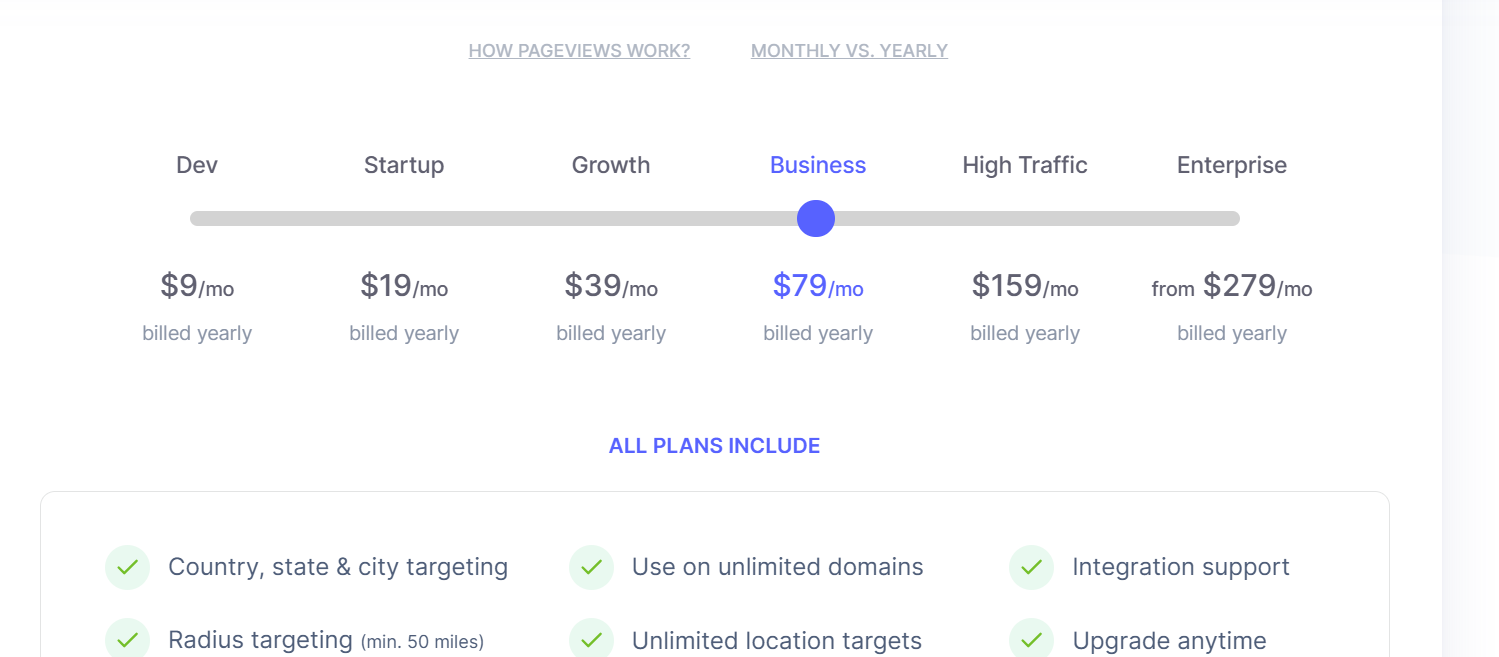
Geo Targetly vs. Webflow (Native): Comparison table
Final thoughts
experiences and advanced website personalization. While it doesn’t replace Webflow or any other builder, it adds a critical layer of personalization and localization that those platforms lack.
If your website attracts international traffic, runs multi-region campaigns, or needs local compliance, Geo Targetly is the most effective way to bridge the geotargeting gap – no migration or heavy development required.
2. Wix – best for ease of use
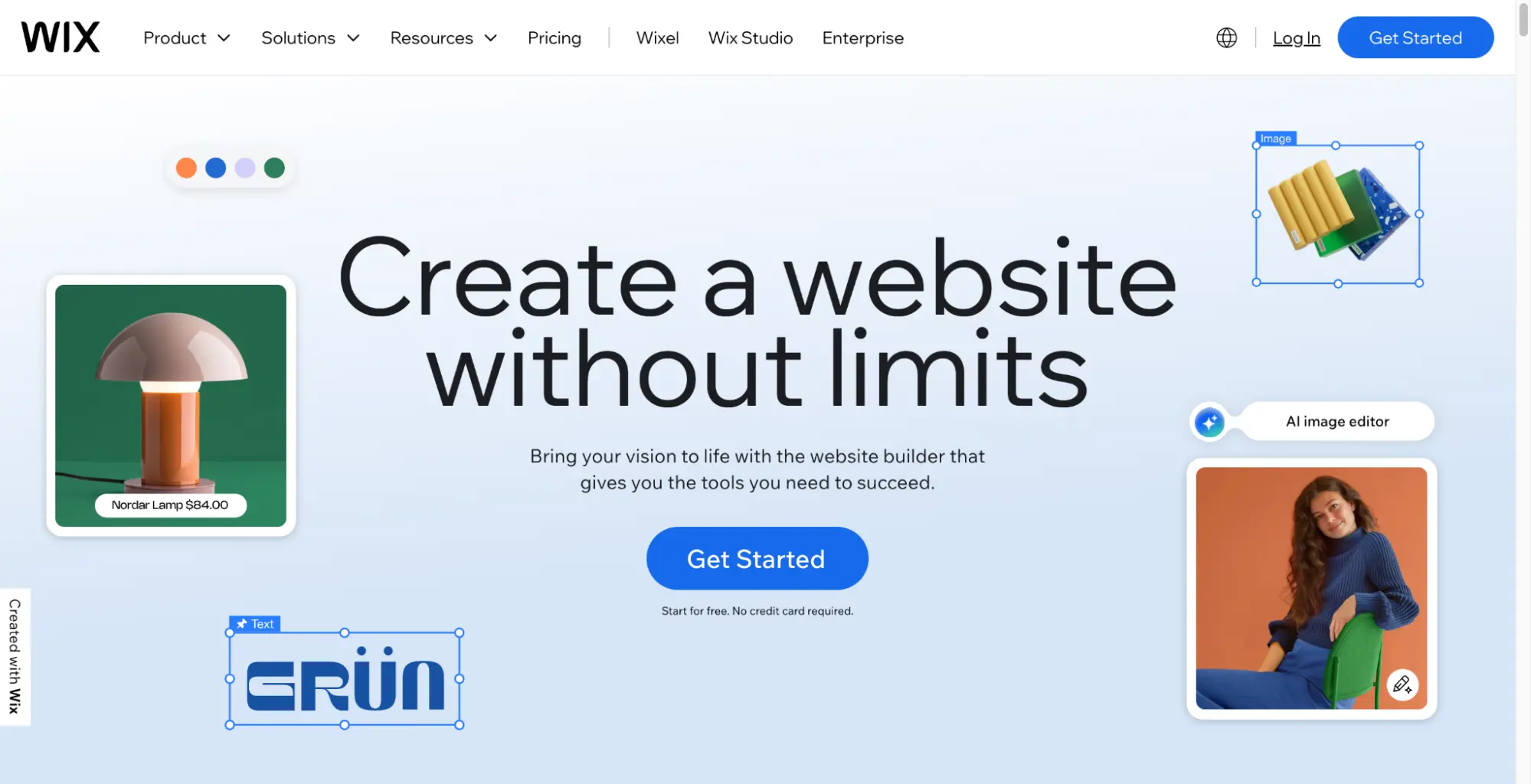
Wix is a fully hosted, drag-and-drop website builder known for its ease of use and speed to launch. Unlike Webflow, which requires some understanding of web design principles like the box model or CSS grids, Wix is built for non-technical users who want to create professional-looking websites quickly.
It comes with an extensive library of customizable templates, built-in SEO tools, and an app marketplace for extending site functionality, without writing code.
This makes Wix ideal for small businesses, digital marketers, and e-commerce store owners who prioritize speed, simplicity, and minimal technical overhead.
While Wix doesn’t have native, advanced geotargeting tools, it offers option to integrate Geo Targetly for more precise IP-based location personalization, redirects, or geo content
For global campaigns or regional personalization, combining Wix with Geo Targetly offers an accessible way to scale location-based experiences.
Key features
- True drag-and-drop editor. Create layouts visually without needing to understand HTML or CSS. Changes are reflected instantly, and mobile responsiveness is automated.
- Hundreds of pre-built templates. Choose from industry-specific themes for restaurants, agencies, online stores, and more. You don’t have to design from scratch as this comes with a large amount of ideas tailored for you to get started.
- Wix app market. Add extra functionality with 250+ apps, including forms, live chat, reviews, bookings, and limited geo tools.
- Wix SEO tools. Built-in features for metadata, schema markup, site indexing, and mobile optimization.
- Wix ADI (Artificial Design Intelligence). Automatically generates a site layout based on your answers to a short quiz. This is perfect for solo entrepreneurs or time-sensitive launches.
- Wix E-commerce (Business plans). Sell digital or physical products with secure checkout, inventory management, and multichannel integrations.
Who is Wix best for?
- Entrepreneurs and small business owners launching a site without developer help
- Digital marketers needing a quick and simple way to build campaign landing pages
- Freelancers and consultants creating a branded portfolio or service page
- Ecommerce beginners who need a hosted storefront with minimal setup
Pricing overview
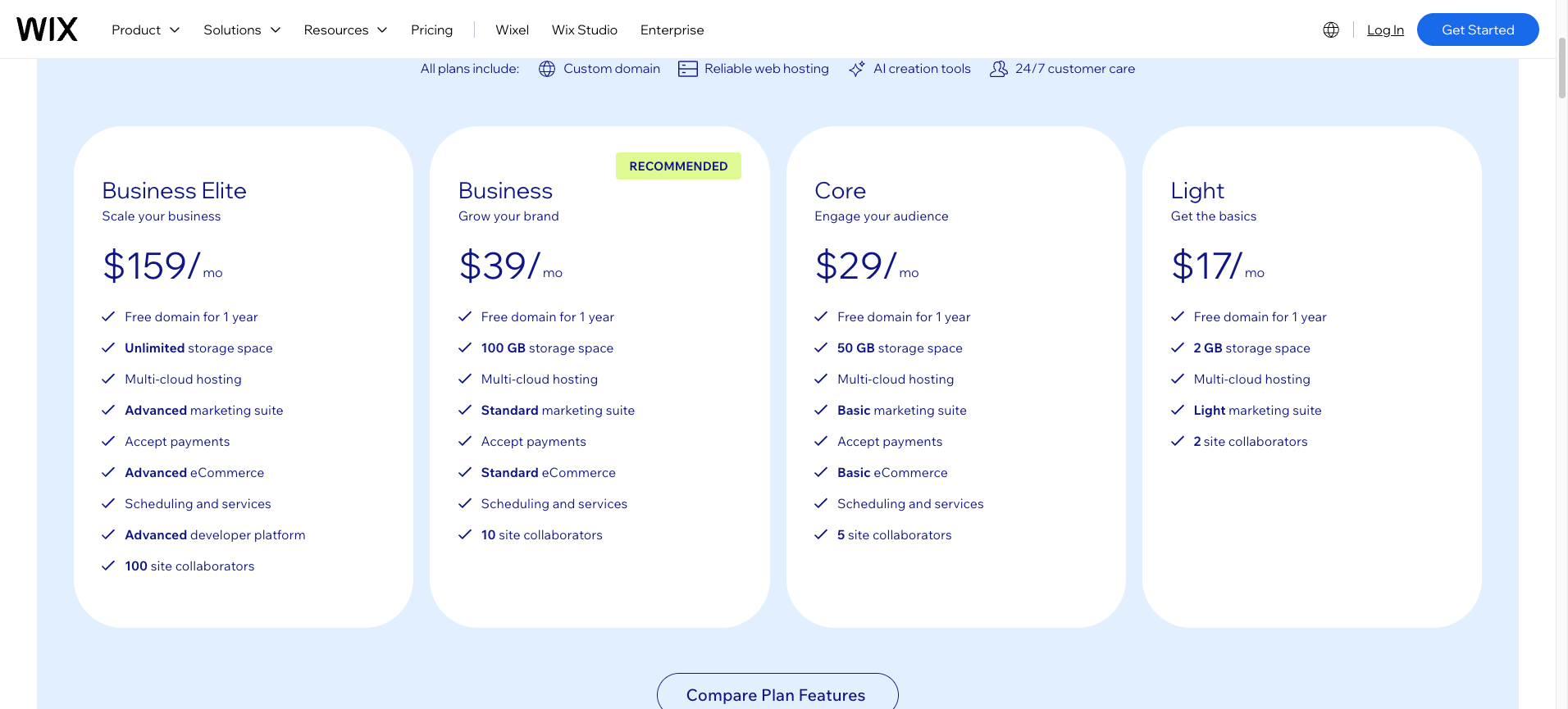
Final thoughts
Wix is the simplest Webflow alternative for users who want to launch fast with minimal complexity. While it lacks the design depth of Webflow or the dynamic flexibility of WordPress, it excels in speed, ease of use, and all-in-one convenience. Pairing it with Geo Targetly overcomes limitations in localization or targeting.
3. Squarespace – best for design templates
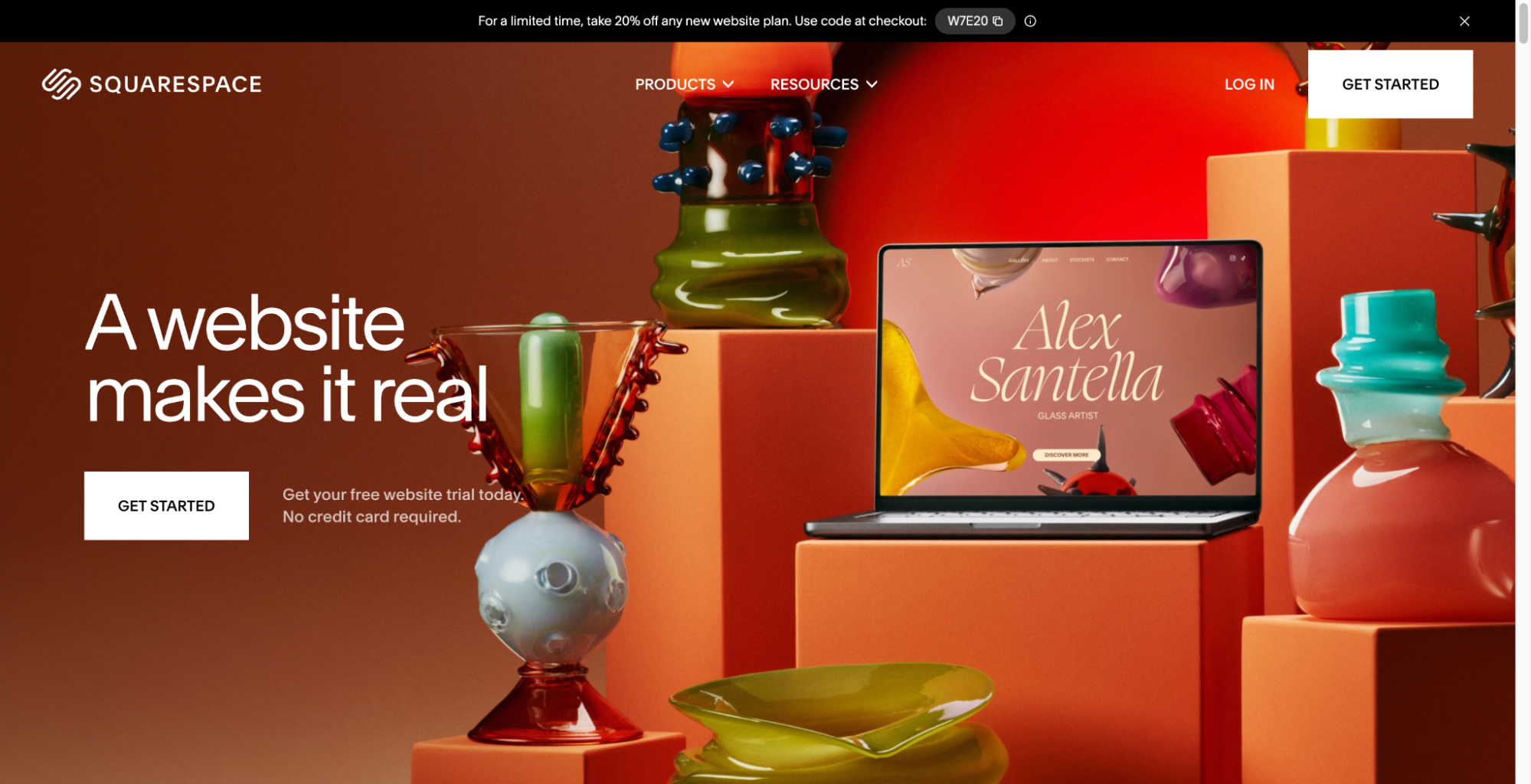
Squarespace is another popular website builder known for its creative design templates and polished user experience. It offers a streamlined interface that allows non-technical users to build beautiful, mobile-friendly websites with minimal effort.
Unlike Webflow, which leans toward flexibility and control for designers, Squarespace focuses on elegance, simplicity, and creative presentation. This makes it a top choice for brands that prioritize aesthetics over technical customization.
Key features
- High-quality templates. Squarespace’s standout feature is its professionally designed templates optimized for photography, creative portfolios, personal brands, and small business websites.This helps you launch visually stunning websites quickly without hiring a designer.
- Visual editing tools. A clean, block-based editing experience enables you to customize layout, fonts, colors, and imagery without code. Perfect for quick, hands-on edits when you don’t want to rely on a developer or struggle with design tools.
- Integrated blogging, scheduling, and ecommerce. Tools like scheduling (Acuity), memberships, digital downloads, and native ecommerce are built in.
- Built-in marketing tools. Includes email campaigns, SEO settings, social media integrations, and basic analytics so you can launch and promote from day one.
- Automatic mobile optimization. All templates are responsive out of the box, no additional styling or settings required. This reduces bounce rate due to awkward layouts, and you won’t spend time fixing what should already work.
Who is Squarespace best for?
- Creative professionals (photographers, designers, writers) who want a modern, minimal aesthetic
- Consultants, coaches, and small business owners
- Bloggers and content marketers needing an integrated CMS
- Users looking for low-maintenance, hosted platforms
Pricing overview
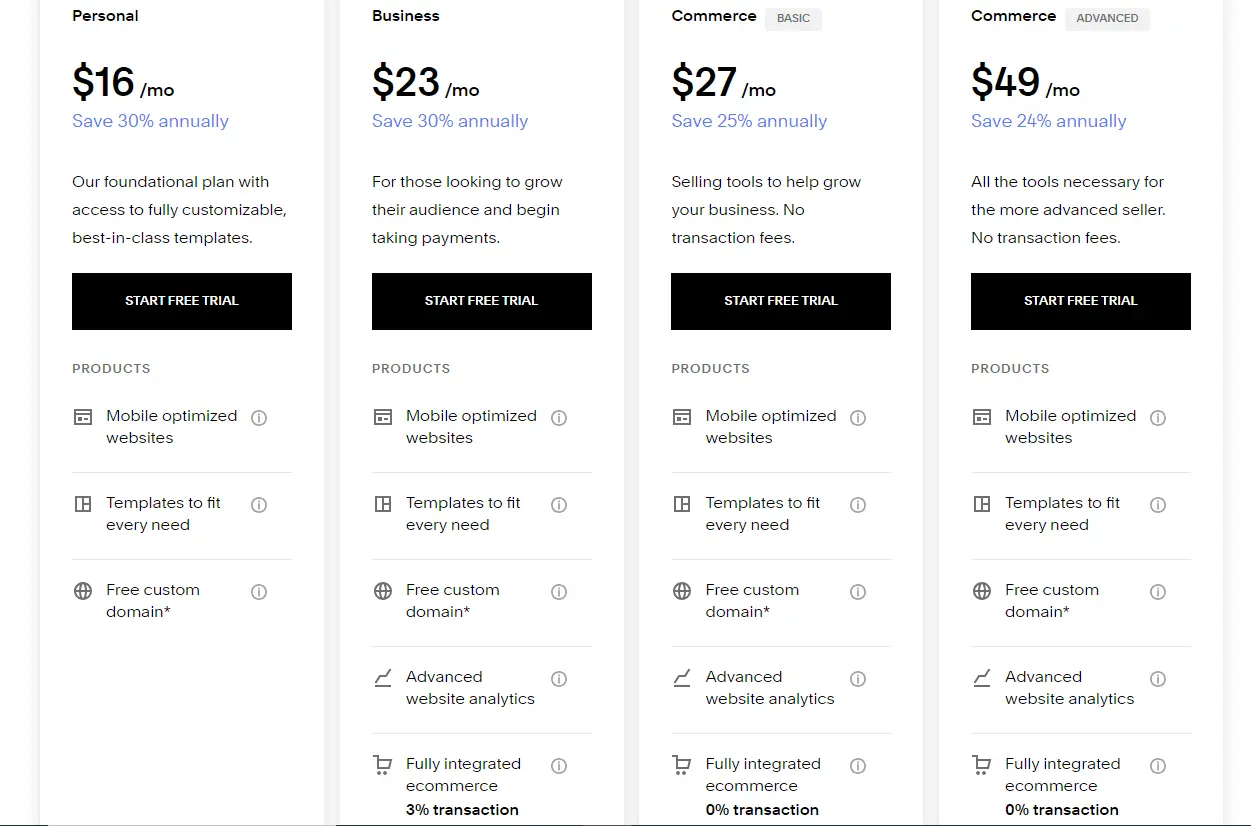
Final thoughts
Squarespace is the best Webflow alternative for design-focused websites. It’s ideal for creatives, personal brands, and small businesses that want a polished, professional online presence with minimal development work.
For businesses needing location-based targeting, consider combining Squarespace with Geo Targetly to add geolocation redirects, dynamic content, and personalization.
4. WordPress + Elementor – best for flexibility
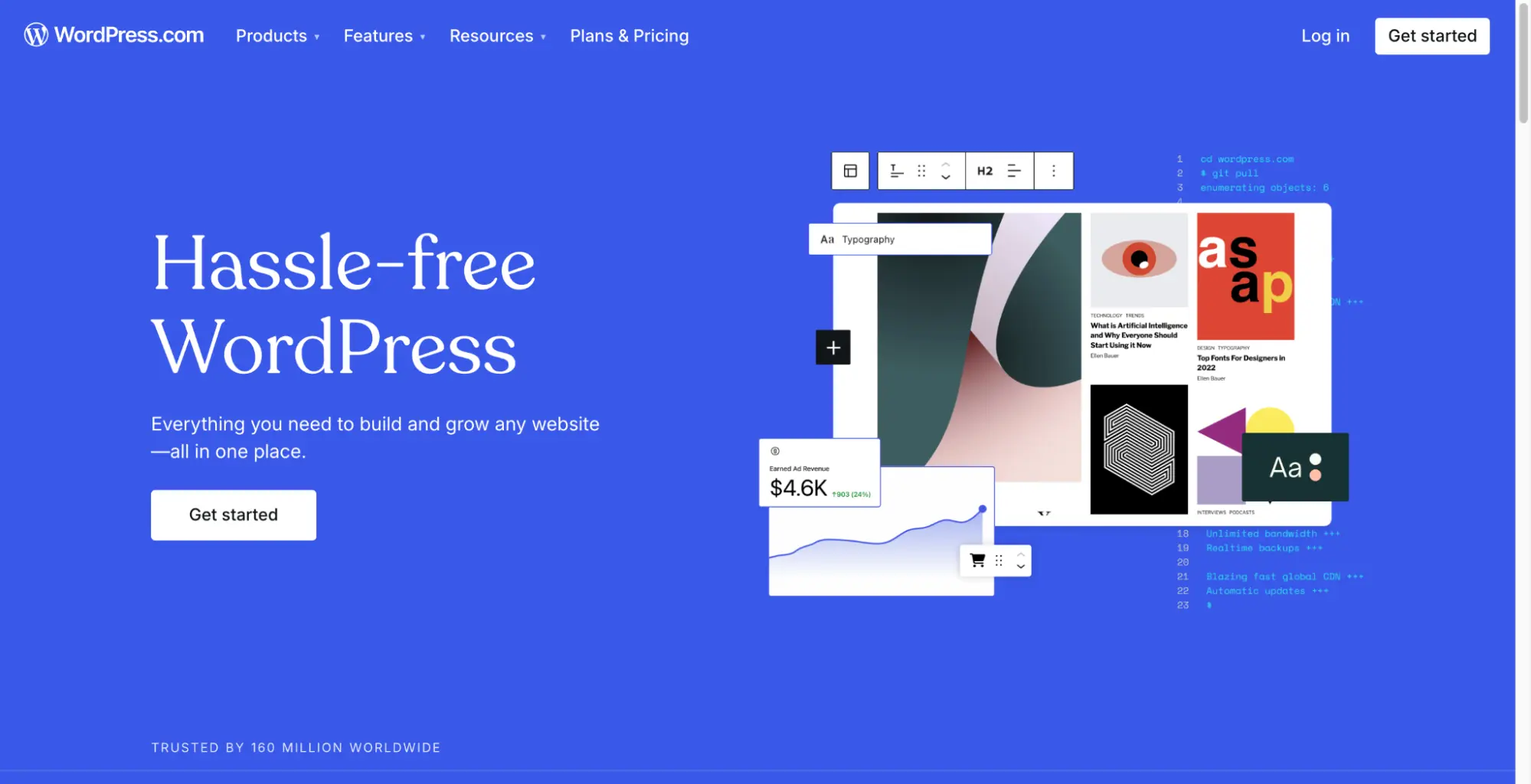
WordPress is the world’s most widely used content management system, powering over 40% of all websites globally. It’s open-source, highly customizable, and supports everything from simple blogs to complex ecommerce and multilingual websites.
When paired with Elementor, a drag-and-drop page builder plugin, WordPress becomes a powerful no-code visual design platform. And it offers full creative control without needing to write HTML or CSS.
Together, WordPress and Elementor form a flexible alternative to Webflow. It’s ideal for users who want extensive control, scalability, and plugin access, without being locked into a closed ecosystem.
Key features
- Full design freedom. Elementor provides pixel-level control with an intuitive visual builder, including advanced layout options, motion effects, and responsive design tools. This gives you complete creative control to build exactly what you envision, without relying on a developer.
- Open-source flexibility. WordPress allows complete control over site structure, functionality, and hosting environment. It’s ideal for custom solutions and complex integrations.
- Massive plugin ecosystem. Extend your site with 50,000+ free and premium plugins for SEO, ecommerce, security, forms, memberships, and more. You can add almost any feature without custom coding. This saves you time and reduces development costs.
- Multisite and multilingual support. Native and third-party tools make it easy to run multi-region, multi-language sites. Great for global businesses or agencies managing multiple client sites from one dashboard.
- Scalable hosting options. Use your own server or choose managed WordPress hosting (like WP Engine, SiteGround, Kinsta). This gives you flexibility in terms of matching performance and pricing to your specific needs.
Who is WordPress best for?
- Agencies and developers building custom client websites
- Businesses needing advanced features or integrations
- Content-heavy sites with complex structure or multilingual needs
- E-commerce brands using WooCommerce with flexible layout control
- Marketers wanting to scale landing pages without design limitations
Final thoughts
If you want complete control over your site, from design to hosting to localization, WordPress + Elementor is the most flexible Webflow alternative available. It’s ideal for businesses and developers who need advanced capabilities and are comfortable managing a custom stack.
And if combined with Geo Targetly it becomes “WordPress + Elementor + Geo Targetly”, which is a robust tech stack to create fully localized experiences, without relying on workarounds or platform limitations.
5. Shopify – best for e-commerce
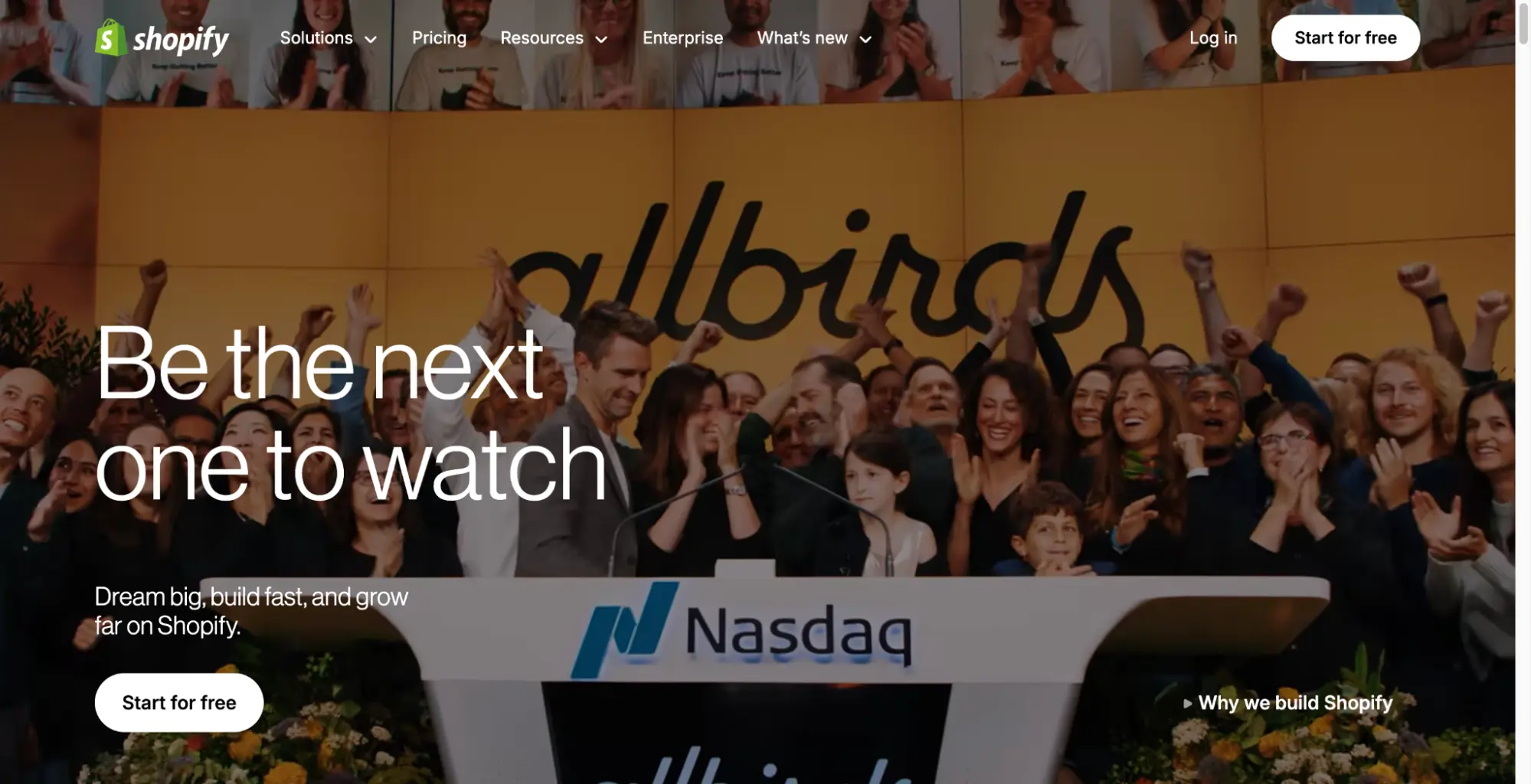
Shopify is a leading e-commerce platform built specifically for online stores. It offers an end-to-end solution that includes product management, secure checkout, inventory tracking, and built-in marketing tools.
What sets Shopify apart from Webflow is its e-commerce-first foundation. While Webflow includes e-commerce features, they are secondary to its site-building capabilities. Shopify is built specifically around it, which makes it a strong Webflow alternative if selling products is your primary goal.
Key features
- Product management at scale. Easily manage physical or digital products, SKUs, variants, inventory, and fulfillment from a single dashboard. This helps you stay organized and efficient, even as your product catalog grows.
- Multi-channel selling. Sell on your website, Instagram, Facebook, Amazon, or even in-person with Shopify POS. You can reach customers wherever they shop and manage everything from one unified system.
- Secure checkout & built-in payments. Shopify Payments is PCI-compliant and optimized for high conversion; supports Apple Pay, Google Pay, PayPal, and more. This provides a smooth and trusted checkout experience that boosts sales and builds customer confidence.
- Theme customization. Use Shopify's visual editor or edit Liquid code for full design flexibility. Whether you're a beginner or a developer, you can build a storefront that fits your exact brand and style.
- App store with 8,000+ apps. Extend functionality with marketing, analytics, SEO, shipping, and loyalty tools. Easily add new features without custom development, saving time and development costs.
International commerce tools. Support for multi-currency, multi-language, and region-specific pricing via Shopify Markets. This makes it easy to expand globally while offering a localized shopping experience to international customers.
Who is Shopify best for?
- Businesses focused on e-commerce as their primary channel
- Brands that want a stable, hosted platform with minimal technical setup
- Dropshipping or DTC brands selling across regions
- Teams that need centralized product and customer management
Pricing overview
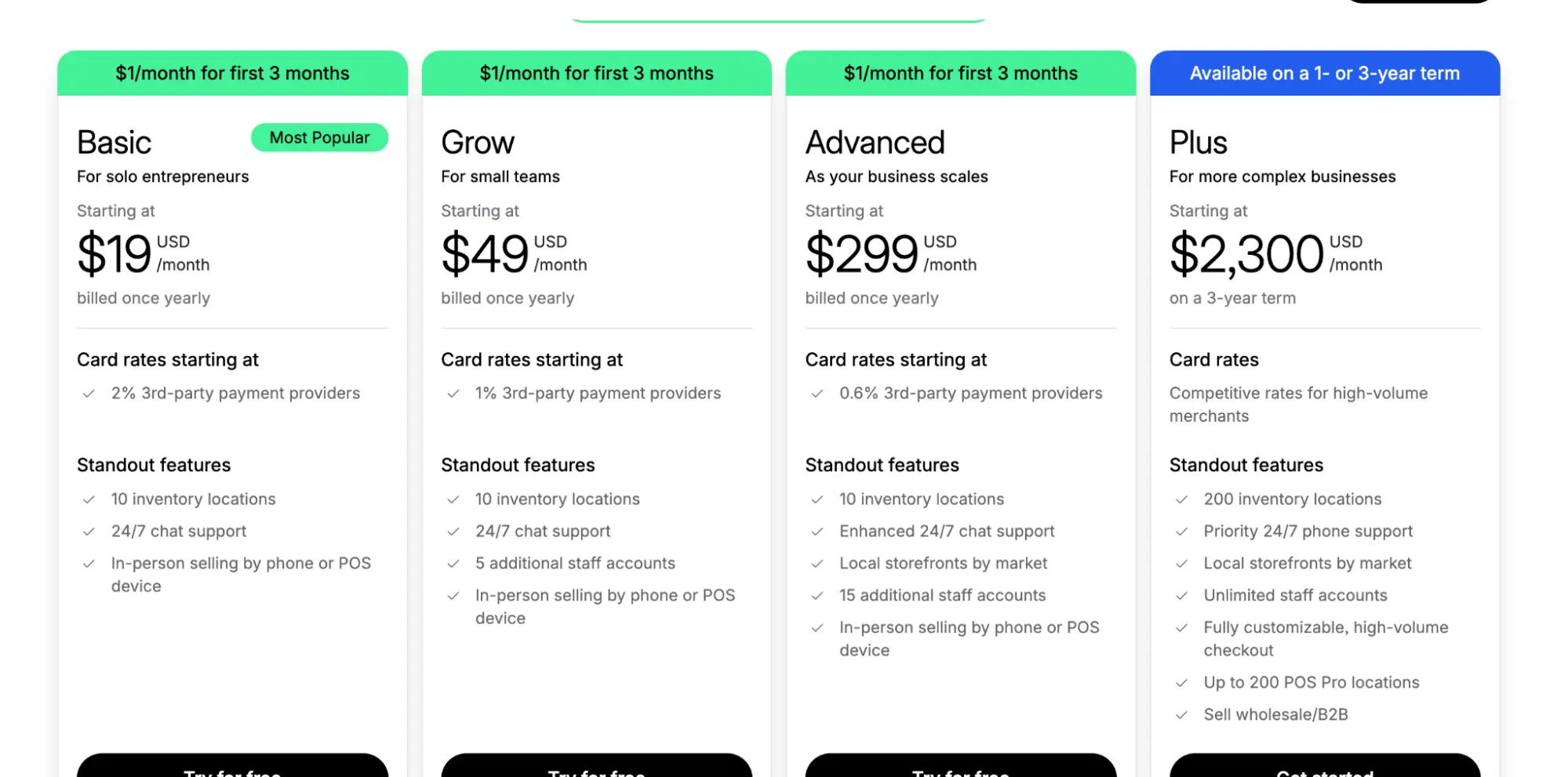
Final thoughts
If your business revolves around e-commerce, Shopify is the most reliable Webflow alternative. It’s built for product-driven businesses and provides the infrastructure and tools needed to manage and scale an online store efficiently.
Integrating Shopify with Geo Targetly allows you to go beyond Shopify Markets and deliver deeply localized customer experiences, from redirects to content and regional offers.
6. Framer – best for interactive sites
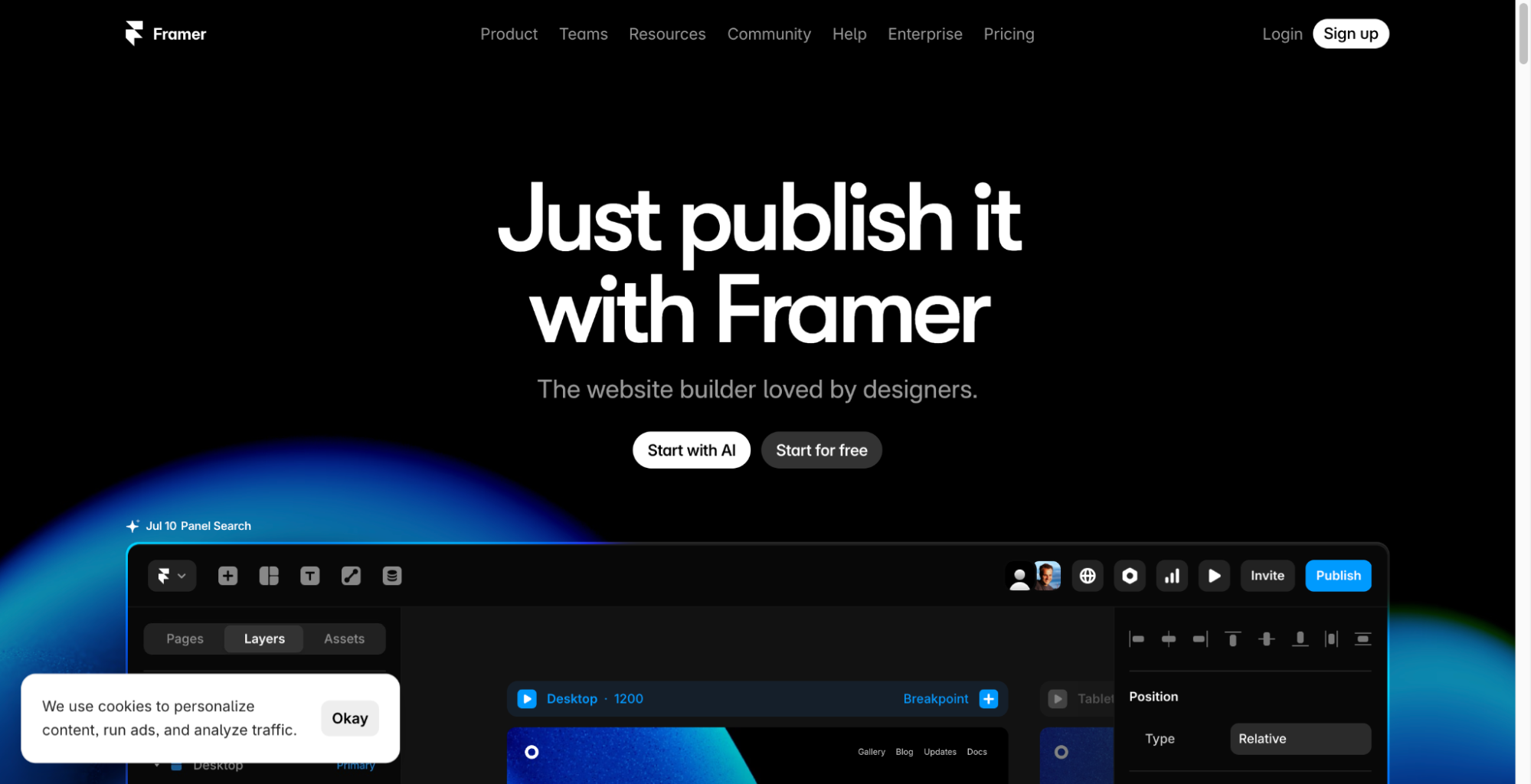
Framer is a next-generation website builder designed for interactive and animated performing sites. Originally created as a prototyping tool for designers, Framer has evolved into a visual development platform that enables users to design and publish websites with built-in animations, responsiveness, and collaboration features.
Unlike traditional builders that focus on static layouts, Framer excels at micro-interactions, transitions, and scroll-based animations all created without code. This makes it a compelling Webflow alternative for startups, SaaS landing pages, product launches, and marketing teams that want modern, polished, and motion-rich experiences.
Key features
- Visual design with built-in interactivity. Design custom animations, hover states, parallax scrolling, and transition effects natively, no plugins or code required.
- Real-time collaboration. Teams can design, edit, and review in real time (similar to Figma), making Framer ideal for cross-functional collaboration between design and marketing teams.
- Responsive layout tools. Automatically adapt designs for mobile, tablet, and desktop with intuitive constraints and layout controls.
- Custom CMS support. Create custom content structures and connect pages to dynamic data, similar to Webflow’s CMS functionality.
- Free hosting and custom domains. Framer hosts sites for free with blazing-fast performance on a global CDN; paid plans include custom domain support.
Figma to Framer import. Quickly import Figma files and turn them into live, interactive websites, saving time and avoiding redundant design work.
Who is Framer best for?
- SaaS startups launching animated or visually impressive landing pages
- Design-focused teams wanting modern motion without coding
- Marketing teams iterating on interactive campaigns
- Freelancers creating portfolios or digital experiences
- Agencies delivering motion-rich microsites or product launches
Pricing overview
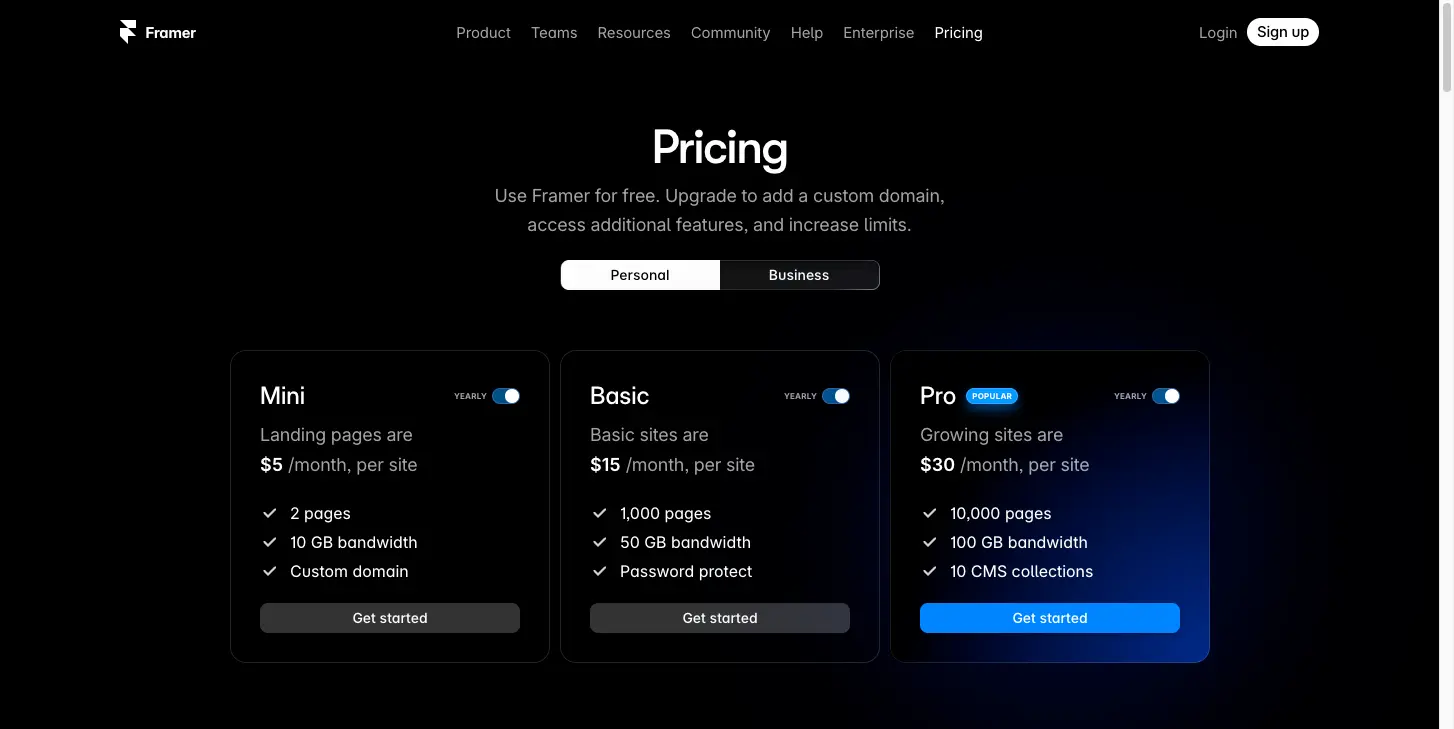
Final thoughts
Framer is the best Webflow alternative for interactive, animated, and visually striking websites. It’s ideal for product teams, designers, and marketers who want modern motion design and real-time collaboration, without the complexity of traditional dev workflows.
When enhanced with tools like Geo Targetly, Framer becomes a powerful platform for visual storytelling and for localized engagement and conversion as well.
7. Weebly – best for simple sites
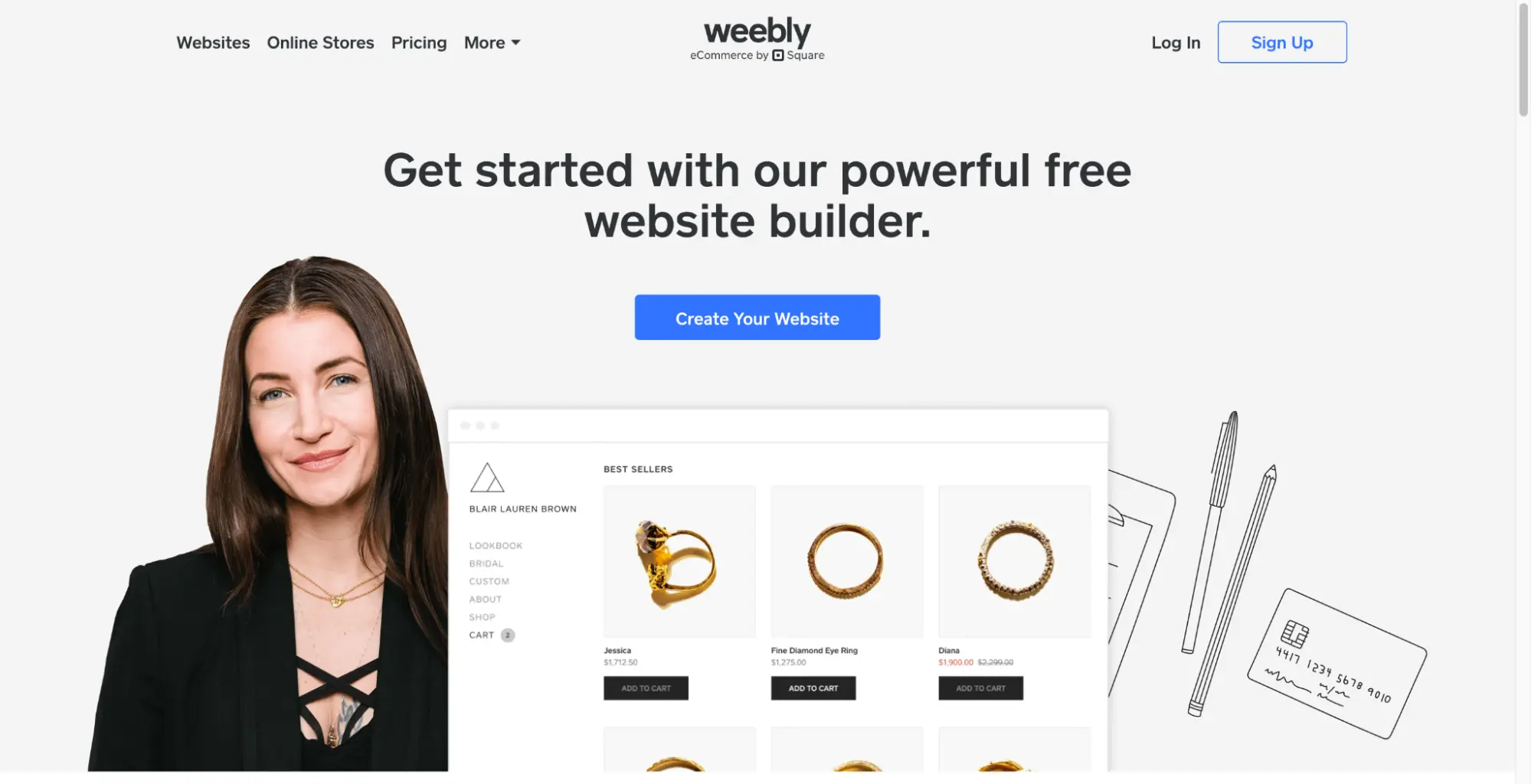
Weebly is a simple, beginner-friendly website builder owned by Square (the payments company, not to be confused with Squarespace). It also features a drag-and-drop editor, built-in e-commerce tools, and integrated Square payments, all designed for quick setup and ease of use.
While many platforms now offer similar features, Weebly focuses on speed, simplicity, and affordability. Unlike Webflow, which caters to designers and developers, Weebly is ideal for users who just want to launch a clean, functional site without worrying about design systems, code, or complex integrations.
Key features
- Easy drag-and-drop editor. Simple page builder interface with no technical skills required. Users can add sections, images, contact forms, and more with a few clicks.
- Basic e-commerce support. Sell products, manage inventory, accept payments, and track orders using Square’s backend tools.
- Responsive templates. A selection of clean, mobile-friendly themes with limited customization options.
- SEO and marketing tools. Built-in tools for meta tags, social media sharing, and email marketing campaigns.
- App center. Access third-party integrations for chat, analytics, booking, and forms.
- Automatic hosting and security. All plans include SSL, fast hosting, and no manual setup.
Who is Weebly best for?
- Individuals and small business owners who need a fast, low-maintenance website
- Local service providers, brick-and-mortar stores, or freelancers
- New entrepreneurs looking to test ideas or launch a proof of concept
- Users who prioritize ease of use and affordability over design complexity
Pricing overview
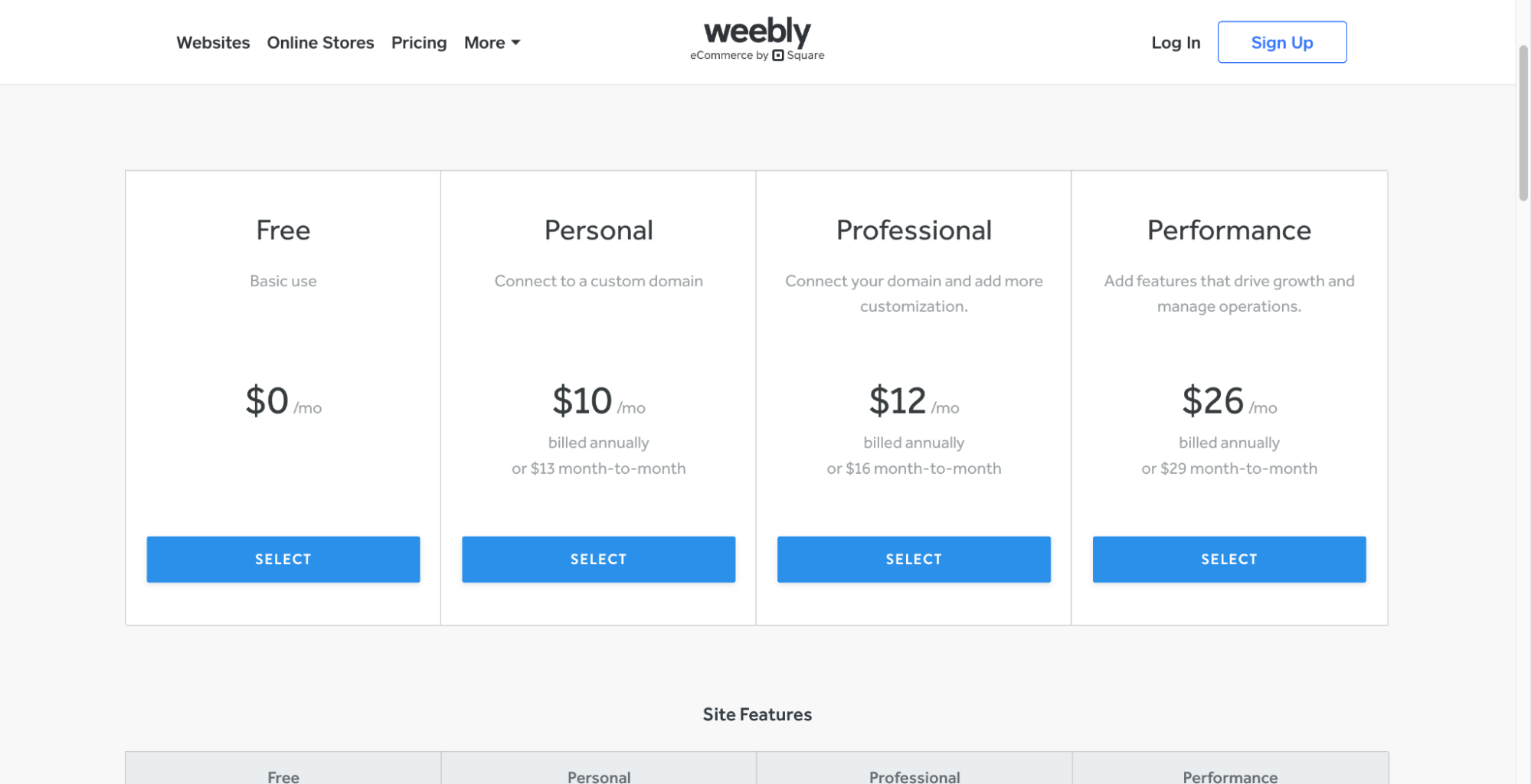
Final thoughts
Weebly is the most accessible Webflow alternative for those who need a basic website without technical complexity. It’s not built for designers or developers – it’s built for speed, simplicity, and getting online with minimal effort.
Weebly does not offer native geolocation or region-based customization. However, users can embed third-party scripts like Geo Targetly for basic IP detection and geolocation-based popups, redirects, or content.
Feature comparison table
Below is a side-by-side comparison of the seven top Webflow alternatives, focusing on usability, pricing, and support for geotargeting or regional personalization.
Key notes:
- Pricing shown from the table is subject to change. Visit each platform for an updated price.
- Geo Targetly is not a standalone website builder, but it is essential if geolocation-based personalization is important to your business.
- Most platforms (except WordPress) do not include built-in geo features, which makes pairing them with Geo Targetly especially useful.
Why Geo Targetly is the best geotargeting add-on for Webflow and other CMS platforms
Webflow is a powerful website builder, but it doesn’t offer native support for location-based redirects, geo-personalized content, or IP targeting. That’s where Geo Targetly comes in. It’s not a Webflow alternative, but rather a complementary solution that adds a full suite of geotargeting capabilities on top of Webflow (or any other CMS). Whether you're running global campaigns, localizing pricing, or routing users to the right regional page, Geo Targetly makes it simple to deliver personalized experiences without platform limitations.
Geo Targetly fills that gap by offering:
- Regional redirects. Automatically send users to the correct domain, store, or landing page based on country, city, or IP address.
- Local content personalization. Swap out headlines, prices, legal disclaimers, or calls-to-action based on the user’s location.
- Geo popups and bars. Trigger promotions or notices relevant to a visitor's region.
- Dynamic targeting rules. Customize by continent, region, device, or even time zone.
Example use case flow:
Visitor from Germany → Lands on global home page → Auto-redirected to /de version → Sees pricing in EUR and a region-specific promotion → Completes purchase
According to industry benchmarks, these types of personalized flows can:
- Increase conversion rates by 20-30%
- Reduce bounce rates by up to 25%
- Improve ad performance with better landing page relevance
You can implement all of this by adding a single JavaScript snippet – no need for backend dev work or heavy customization.
How to integrate Geo Targetly with your website
Whether you're using Webflow, Shopify, Wix, WordPress, or Framer, the integration process is nearly identical:
- Create a geo experience (like redirect, content block, or popup) in your Geo Targetly dashboard.
- Copy the JavaScript snippet provided for that experience.
- Paste the snippet into your website’s header or tag manager.
- Test your configuration using built-in preview tools.
- Go live, location-based targeting is now active.
For more details, check out our guides for full walkthroughs, complete with visuals to help you set up our products step by step.
Final Thoughts: Choosing the best Webflow alternative for your business
There’s no single “best” Webflow alternative. The right platform depends on your goals:
- Choose Wix or Weebly for fast, simple websites with minimal setup.
- Pick Squarespace if design and presentation are your priority.
- Use WordPress + Elementor for maximum flexibility and scale.
- Go with Shopify if ecommerce is your main focus.
- Opt for Framer for modern, interactive product pages or marketing experiences.
But if you need regional personalization, geolocation-based redirection, or dynamic targeting, Geo Targetly is the critical missing layer, regardless of which platform you choose.
Ready to deliver localized experiences that convert? Start your free trial today!

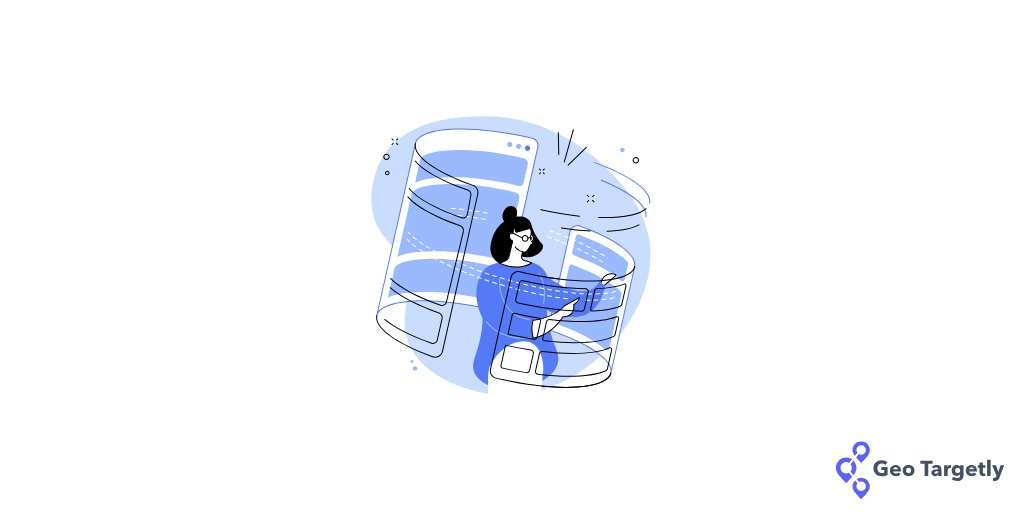



.webp)



